
The Solar-Terrestrial Centre of Excellence (STCE) is a collaborative network of the Belgian Institute for Space Aeronomy, the Royal Observatory of Belgium and the Royal Meteorological Institute of Belgium.
 |
Published by the STCE - this issue : 18 Jul 2014. The Solar-Terrestrial Centre of Excellence (STCE) is a collaborative network of the Belgian Institute for Space Aeronomy, the Royal Observatory of Belgium and the Royal Meteorological Institute of Belgium. |
| Archive of the newsletters | Subscribe to this newsletter by mail |
The organisers of the 11th European Space Weather Week received 350 submissions - a success and put their heads together to fit all the sessions and splinters into five days of Space Weather science, techniques and applications.
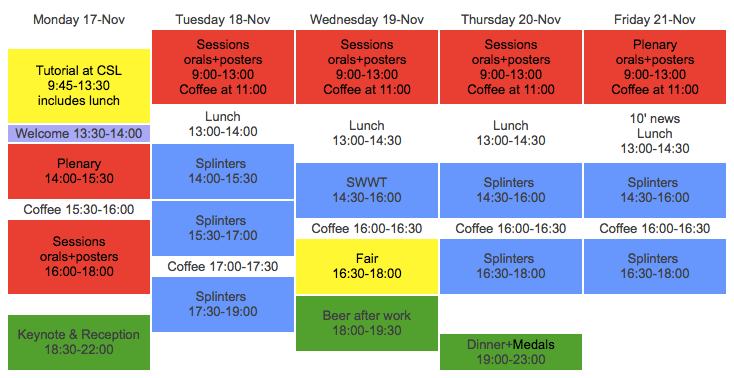
Check
the sessions http://www.stce.be/esww11/program/sessions.php
the splinters http://www.stce.be/esww11/program/splinters.php
The Sun produced 29 C-flares and three M-flares. NOAA active regions 2108 and 2109 were the most complex regions, with a beta-gamma-delta configuration of their photospheric magnetic field for a large part of the week. Together with NOAA AR 2113, these regions were responsible for the majority of the flares.
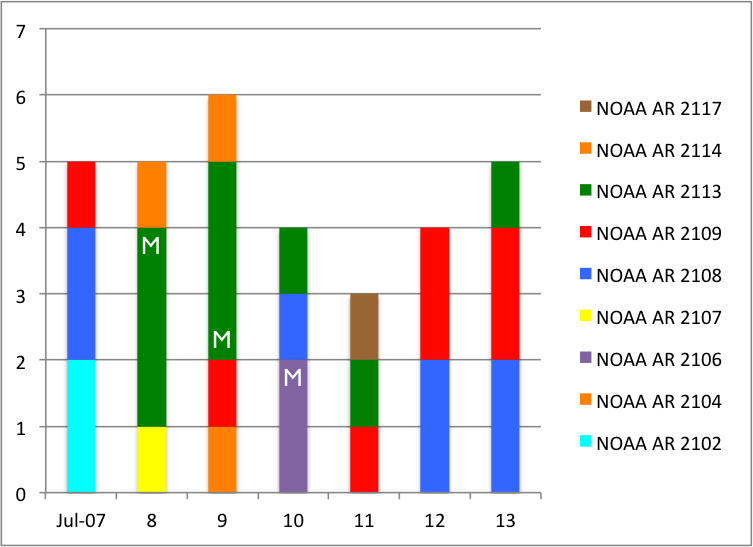
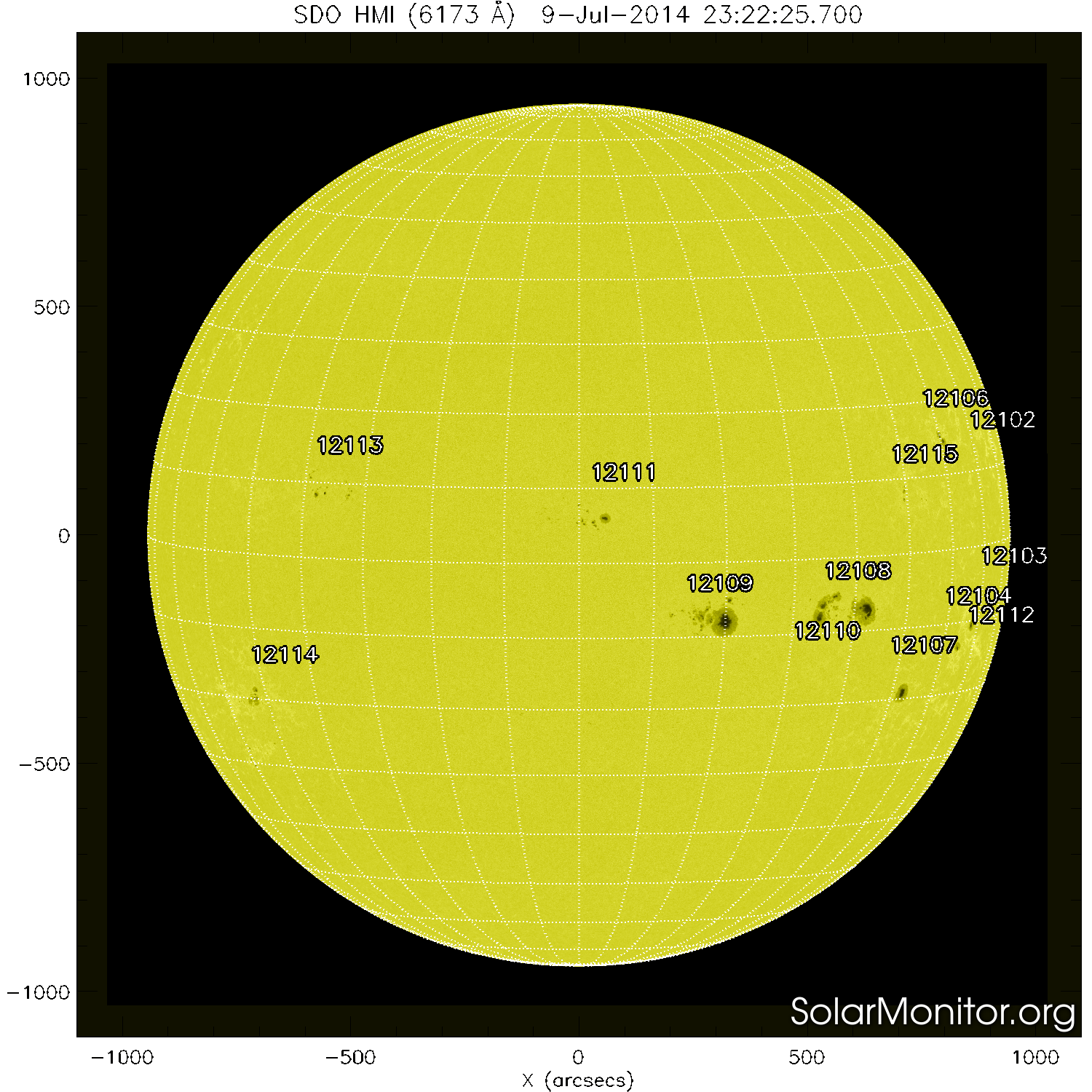
The largest flare, an M6.5 on July 8 originated from NOAA AR 2113 and was associated with a dimming, EUV-wave, type II and IV radio bursts and a partial halo CME. A filament eruption on July 9, occurring near the disk center, was also associated with a CME. Both CMEs were mainly propagating east from the Sun-Earth line. A halo CME occurred on July 10 and was mainly propagating to the West.
The x-ray background flux decreased from the C1- to the B5-level and the radio flux declined from 201 sfu on July 8 to 127 sfu on July 13. Below, the 10cm radio flux starting from May 1 is plotted. It shows that this week was more extreme compared to the previous periods when it comes to the maximum and minimum sfu value.
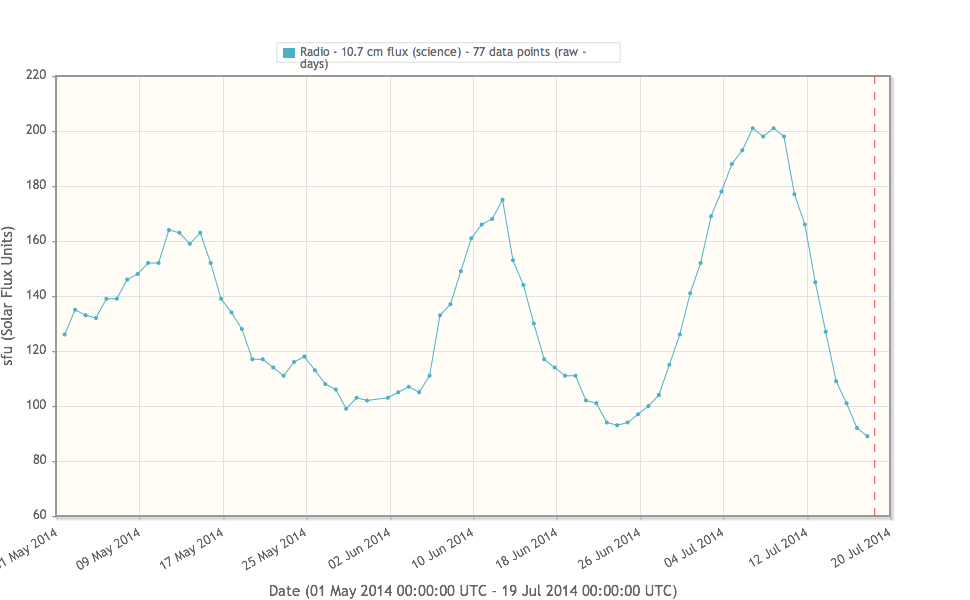
The solar wind speed smoothly increased from 280 to 400 km/s during the first half of the week and then gradually declined to 340 km/s. The magnitude of the interplanetary magnetic field remained below 10 nT, till the end of July 13 when it increased to 11 nT. Bz was mainly negative and varying between -6 and +5 nT.
No signatures of a shock arrival were noticed of the July 8 and July 10 CMEs. The solar wind observations of ACE indicate the arrival of a transient at 13:30UT on July 14, possibly related to the July 9 CME.
Geomagnetic conditions were quiet to unsettled.
| DAY | BEGIN | MAX | END | LOC | XRAY | OP | 10CM | TYPE | Cat | NOAA |
| 08 | 1606 | 1620 | 1630 | M6.5 | B | 150 | I/2 9V/1 | 16 | 2113 | |
| 09 | 0020 | 0026 | 0033 | M1.2 | F | /2II/3I/1 1 | 16 | 2113 | ||
| 10 | 2229 | 2234 | 2237 | M1.5 | 5 | 2106 |
| LOC: approximate heliographic location | TYPE: radio burst type |
| XRAY: X-ray flare class | Cat: Catania sunspot group number |
| OP: optical flare class | NOAA: NOAA active region number |
| 10CM: peak 10 cm radio flux |
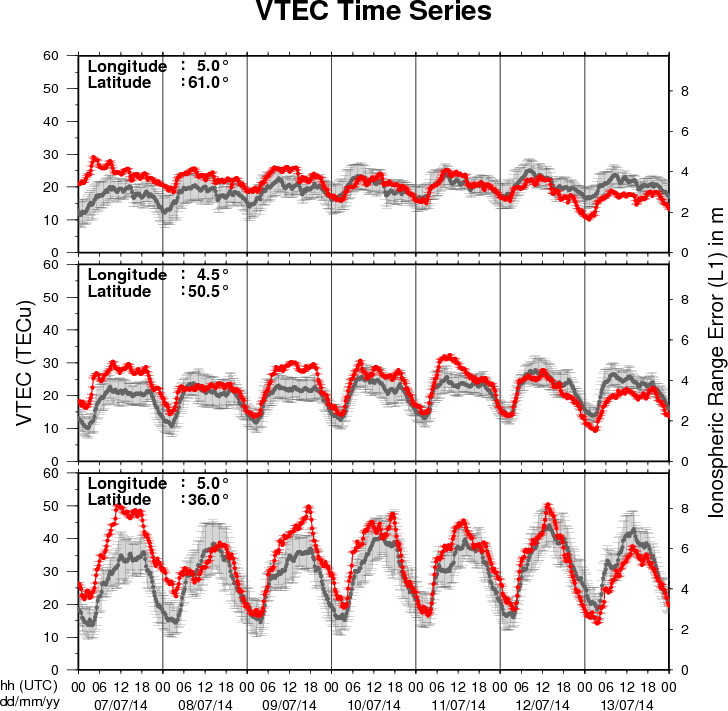
The figure shows the time evolution of the Vertical Total Electron Content (VTEC) (in red) during the last week at three locations:
a) in the northern part of Europe(N61°, 5°E)
b) above Brussels(N50.5°, 4.5°E)
c) in the southern part of Europe(N36°, 5°E)
This figure also shows (in grey) the normal ionospheric behaviour expected based on the median VTEC from the 15 previous days.
The VTEC is expressed in TECu (with TECu=10^16 electrons per square meter) and is directly related to the signal propagation delay due to the ionosphere (in figure: delay on GPS L1 frequency).
The Sun's radiation ionizes the Earth's upper atmosphere, the ionosphere, located from about 60km to 1000km above the Earth's surface.The ionization process in the ionosphere produces ions and free electrons. These electrons perturb the propagation of the GNSS (Global Navigation Satellite System) signals by inducing a so-called ionospheric delay.
See http://stce.be/newsletter/GNSS_final.pdf for some more explanations ; for detailed information, see http://gnss.be/ionosphere_tutorial.php
Presentation given during the STCE workshop Modelling of antennas and calibration of radio instruments.
http://www.spaceweather.eu/en/repository/show?id=526
Presentation given during the STCE workshop Modelling of antennas and calibration of radio instruments.
http://www.spaceweather.eu/en/repository/show?id=527
Presentation given during the STCE workshop Modelling of antennas and calibration of radio instruments.
http://www.spaceweather.eu/en/repository/show?id=528
Presentation given at the STCE workshop Modelling of antennas and calibration of radio instruments, June 2014.
http://www.spaceweather.eu/en/repository/show?id=529
Presentation given at the STCE workshop Modelling of antennas and calibration of radio instruments, June 2014.
http://www.spaceweather.eu/en/repository/show?id=530
Presentation given at the STCE workshop Modelling of antennas and calibration of radio instruments, June 2014.
http://www.spaceweather.eu/en/repository/show?id=531
Presentation given at the STCE workshop Modelling of antennas and calibration of radio instruments, June 2014.
http://www.spaceweather.eu/en/repository/show?id=532
Presentation given at the STCE workshop Modelling of antennas and calibration of radio instruments, June 2014.
http://www.spaceweather.eu/en/repository/show?id=533